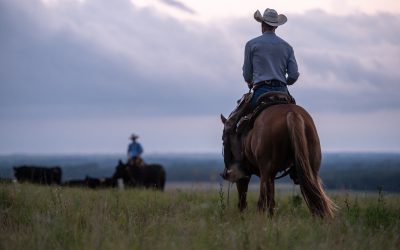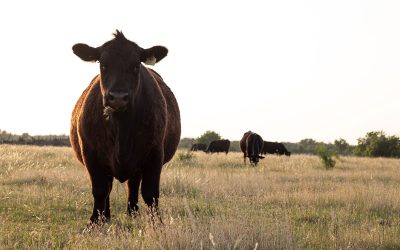
Beef producers have patience
September 30, 2011
Getting a finished publication in the mail is to a writer what sale day or getting carcass data reports back is to a rancher or feeder.
I get a good feeling about seeing pictures and words I sent in then turned into nice-looking, easy-to-read copy. And although it’s been a number of years, I remember taking my cattle checks to the bank and getting that same feeling of satisfaction. After all that hard work and anticipation, you finally get to see the results of your final product.
Do you remember these guys?
I put this very picture up on the blog back in June while I was on a story trip through southern Iowa and then I gave you just one little piece of their story.
That was June 3. By the time I got the September Angus Journal in the mail earlier this month, I had written dozens of other stories, been on three more work-related trips, and my 1 ½ year old daughter went from simple words to talking in phrases.
Basically, it felt like a long time!
But for farmers and ranchers, that wait would be a breeze considering the timeline you live by. If you want to make genetic change it literally takes years to see the full results if you consider things like retaining heifers and stacking genetics. Check out the column Mark McCully wrote about how those production practices affected the slow climb in CAB acceptance rates from 2006 to 2011 here: Making progress
The results of new management—whether it’s a new weaning or health program, more sorting or a different fishing ration—are quicker to get. However, variables like markets and weather make it hard to strictly make year-to-year comparisons.
I guess that just places more emphasis on how important all those decisions truly are. They must be based on sound advice and data, because if you make a wrong turn it might be a long time before you even know it.
We talk about our Best Practices Manual a lot. It, too, took a while to put together. It combines advice from animal scientists and industry folks that can serve as a great road map if you’re aiming to produce high-quality beef.
And if that’s your aim, I’m sure you’re as excited to get an Angus Journal or Angus Beef Bulletin in the mail as I am!
May your bottom line be filled with black ink,
~Miranda
PS—If you want to learn all about Mendenhall Farms, be sure to check out that story in the September issue or on-line.
You may also like
Progress from small steps
Every day is a chance to learn and get better. Thousands of others like my new friends in Alabama are taking steps to meet the shifts in consumer demand, and to know more. Small steps in the right direction can start now. Even if it’s just recording a snapshot of where you are today, a benchmark for tomorrow.
Not perfect, but working to get better
The CAB Cattleman Connection team heard its name called more than once in the virtual ceremonies, and each time came a sense of personal accomplishment, but even better: confirmation that we’re getting better at our craft. I hope that means we’re doing a better job for you.
Beefed up findings
Frank Mitloehner presents his findings on the animal ag sector’s impact on global warming. He explains how cattle counterbalance other fossil fuel sectors, proving that cattle are a solution and not a threat.



